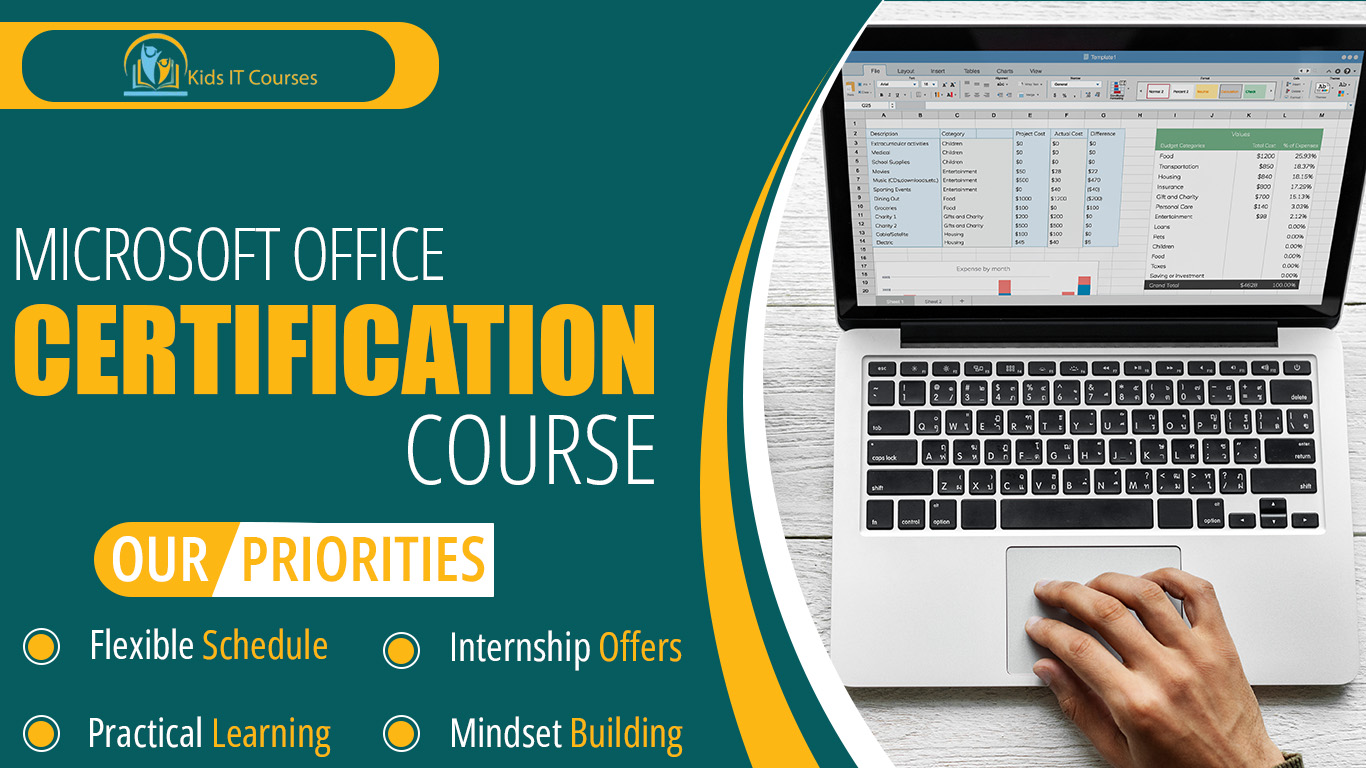
Microsoft Office Course for Kids
Definition
◦ Microsoft Office helps. You work on a computer.
◦ Word is for writing. Stories, notes, and letters.
◦ Excel is for numbers. And making tables.
◦ PowerPoint makes slides. For fun presentations.
◦ Outlook is for email. To send and get messages.
◦ It is easy. Kids can learn quickly.
◦ It helps in school. And future jobs too.
Importance
◦ Microsoft Office helps. Kids work on computers.
◦ It teaches typing. And making neat files.
◦ Kids learn Word. For writing and notes.
◦ They use Excel. To make simple tables.
◦ PowerPoint helps. Make fun slideshows.
◦ It builds skills. For school and future.
◦ Learning it early. Makes kids confident.
Advantages for Freelancing
◦ Kids can write. Using Microsoft Word.
◦They can count. With Microsoft Excel.
◦ They can present. With Microsoft PowerPoint.
◦ It saves time. Work becomes easier.
◦ It looks neat. Work is well organized.
◦ Kids learn skills. Useful for school work.
◦ It builds confidence. In using computers.
Module 1: Introduction to Microsoft Office
Overview of Microsoft Office suite: Word, Excel, PowerPoint, and more
Importance of Microsoft Office in professional and educational settings
Benefits of using Office tools for collaboration and productivity
Activity: Create a simple document in Microsoft Word
Module 2: Microsoft Word – Advanced Document Creation
Learn advanced features like formatting styles, headers, and footers
Real-life example: Creating a professional resume or project report
Introduction to document layout options and page design
Activity: Create a report with a title page, table of contents, and section headers
Module 3: Microsoft Excel – Advanced Data Management and Analysis
Advanced Excel functions: VLOOKUP, pivot tables, conditional formatting
Real-life example: Budget tracking and data analysis for a project
Creating dynamic charts and graphs to visualize data
Activity: Build a budget tracker with formulas, pivot tables, and charts
Module 4: Microsoft PowerPoint – Engaging Presentations
Learn how to create engaging slideshows with multimedia
Real-life example: Designing a project presentation for a business meeting
Advanced features: Animations, transitions, and master slides
Activity: Design a 5-slide presentation on a given topic with animations
Module 5: Microsoft Outlook – Email and Calendar Management
How to send, receive, and organize emails effectively
Real-life example: Managing a professional inbox and appointments
Using the calendar to schedule meetings and set reminders
Activity: Set up email folders and create a meeting schedule using Outlook Calendar
Module 6: Microsoft Access – Database Management
Introduction to databases and how Access helps in organizing large data
Real-life example: Creating a customer database for a small business
How to build tables, queries, and reports in Access
Activity: Create a small database to manage inventory or customer contacts
Module 7: Microsoft OneNote – Digital Note-Taking and Organization
Learn how to use OneNote for efficient note-taking and organization
Real-life example: Using OneNote to keep track of meeting notes and project ideas
Syncing OneNote across devices for accessibility
Activity: Organize your notes into sections and pages, adding multimedia content
Module 8: Microsoft Office for Career Success
How mastering Microsoft Office tools opens up career opportunities
Real-life example: Using Office for project management, reports, and communication
Key skills: Collaboration, communication, and productivity enhancement
Activity: Create a final portfolio showcasing documents created in Word, Excel, and PowerPoint
Bonus Materials
Microsoft Office tips and tricks cheat sheet
Template downloads for reports, budgets, and presentations
Access to community forums for further learning and discussions
Interactive quizzes to test your Microsoft Office knowledge
Certificate of Completion for Microsoft Office
